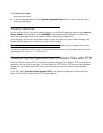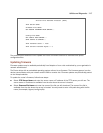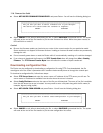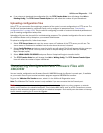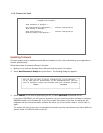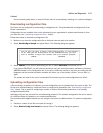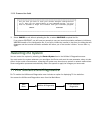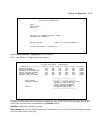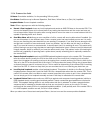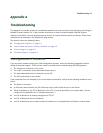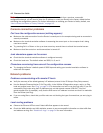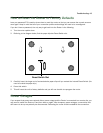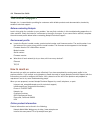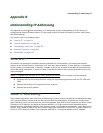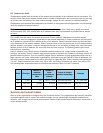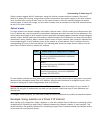11-14 Firmware User Guide
24 hours: Cumulative statistics, for the preceding 24-hour period.
Line Status: Conditions may be Normal Operation, Red Alarm, Yellow Alarm, or (Rmt/Lcl) LoopBack
Loopback Status: Current loopback condition
Tests: Offers a pop-up menu with the following options:
■ Normal - Clear Loopback clears any local loopbacks and sends an ANSI PLB clear to the remote CSU. This
returns the Netopia Router to its normal state if any testing has been done and the router has been put
into a looped state. Select this option after running tests to return the router to a normal state so that it is
capable of passing traffic as it should.
■ Send Blue Alarm -all 1s forces an error condition of all 1s; remote will send a yellow alarm if enabled. You
can use this pattern in two different ways. Once a remote router has been looped you can use it to verify
that you are receiving the same data that you are sending. For example, if you send all ones across the line
and get back a mixture of ones and zeroes, there is a problem. You can also use this test in a different
way. If you send all ones to a remote device, it should report that it is receiving all ones. This would verify
(without having to put up a loop) that data is reaching the destination intact. It does not verify bi-directional
integrity however, which is verified if you have the remote end in loop. This pattern is also for checking the
remote end's capability of reporting back a yellow alarm (usually something that is optionally enabled on
the remote CSU).
■ Remote Payload Loopback sends an ANSI BPM payload loopback request to the remote CSU. This pattern
tells the remote device (usually the CSU at the other end of the circuit) that it should go into a looped
state. Use this pattern for putting up a loop to do testing from a remote portion of the circuit, either by the
Telco or by the CPE at the remote end of the circuit. This test makes the remote CSU go into a looped state
so that any data you send it is returned to you. This is useful for determining if the remote CSU is receiving
data from the CPE. If it does not loop then you can conclude that it is not receiving any data from you.
■ Local Payload Loopback enables a local payload loopback. This pattern is similar to the Remote Payload
Loopback pattern except that it puts the local CSU into a looped state rather than the remote CSU. This is
useful if the remote side is not able to send a remote loop code to the router to put it into a looped state.
You can simply put it into loopback manually and see if that loop is reflected at the remote side.
■ Loopback Pattern Test sends continuous 1200 byte packets and compares incoming packets (similar to
ISDN loopback tests), counting good and bad packets. Twenty consecutive good packets are required to
PASS. The loopback testing screen is only visible when this test is selected. It sends a pseudo-random
sequence that is intended to simulate data so that you can check for errors on the circuit. This test
requires that the remote CSU be in a payload loopback condition. (It will partially work if the remote CSU is
in a LINE loopback condition as well, but this is less reliable.)
When you select one of these tests and press Return, the test runs and the screen provides feedback.



